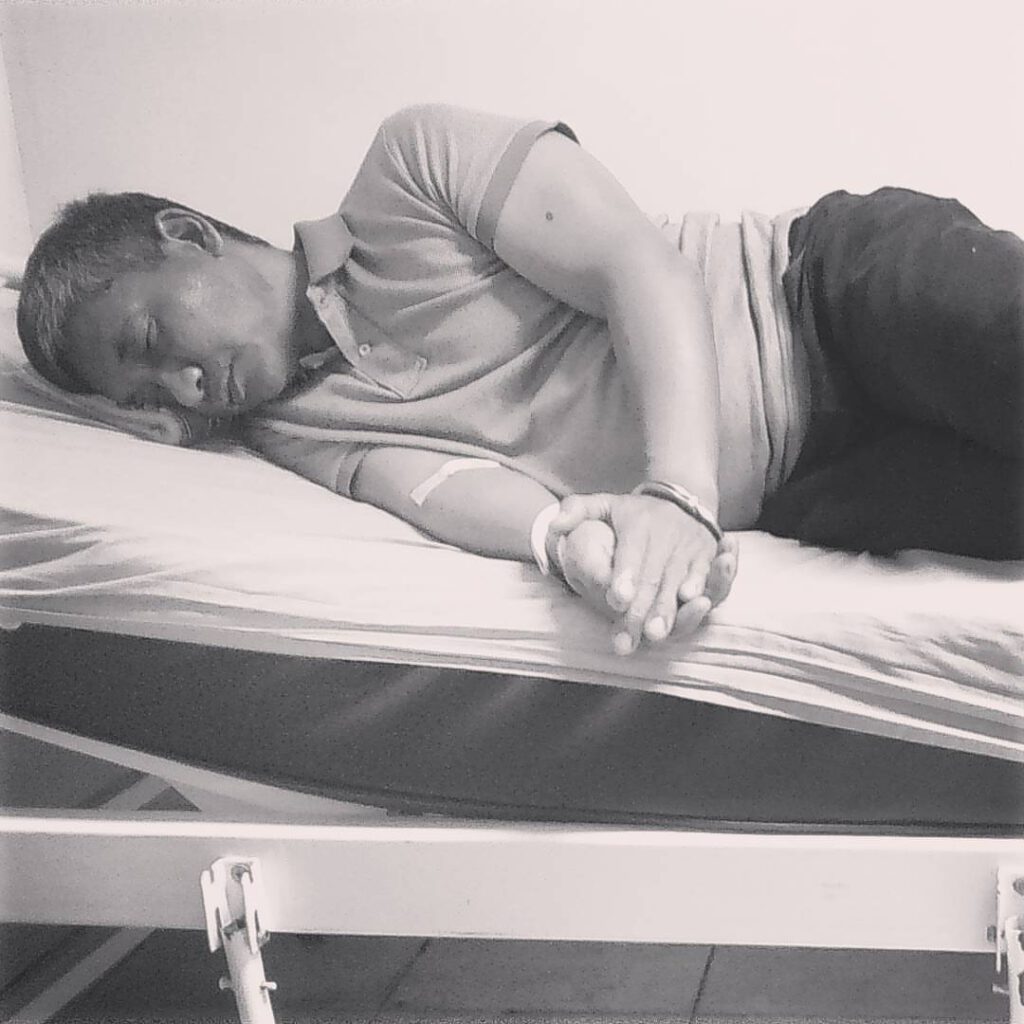This list recognizes celebrities who supported people’s issues in 2016 and whose influence helped amplify the change the masses want and need.
1. Celebrities for #BigasHindiBala

Solidarity and donations poured in from many celebrities when the Kidapawan Massacre took place. The Aquino regime’s fascist response took down protesting drought-stricken farmers in North Cotobato, known as Kidapawan shooting in April 1 and more popularly as the event that made viral the indignation #BigasHindiBala.
Action star Robin Padilla visited and addressed the thousands upon thousands of farmers who were attacked and harassed by the military, despite being sheltered inside the sanctuary of the Spottswood Methodist Church.
He said, “Nandito ako dahil Pilipino ako. Yung mga nangyayari sa inyo hindi yan dapat nangyayari sa Pilipino. Ang batas, dapat ang pinapanigan nyan ang mga naaapi… Itong boses ko aalingawngaw to… papaalingawngawin ko ito sa Maynila.”
Robin and his family of actors and actresses donated the sacks of rice to the 5,000 Kidapawan farmers. Robin personally bought 200 sacks of rice while Mariel Rodriguez (his wife), Daniel (his nephew) and Karla Estrada (Daniel’s mother) likewise donated sacks of rice.
Joining the Padilla family in donating sacks of rice are Angel Locsin, Anne Curtis-Smith, Jasmine Curtis-Smith, Bianca Gonzales-Intal, Luis Manzano, Erika Padilla, Megan Young, Mikael Daez, and filmmakers Perci Intalan and Jun Lana.
Miss World Philippines 2001 Carlene Aguilar-Ocampo expressed her solidarity to the farmers as well as she posted a photo in her Instagram account where she holds grains of rice in her palm. She said, “Ipaglaban at alagaan natin sila. Huwag daanin sa dahas.
2. The Seguerras

In 2015, Aiza & Liza Diño-Seguerra arduously supported the struggle of the Lumads for their ancestral land. As the year turned and both were appointed into positions under the Rodrigo Duterte administration (Aiza as the National Youth Commission Chairperson and CEO and Liza as the Film Development Council of the Philippines Chairperson), the couple did not wane in their support for the struggles of our indigenous people in Mindanao.
Like in 2015, they continue to join activities of the Lakbayan ng Pambansang Minorya para sa Sariling Pagpapasya at Makatarungang Kapayapaan last October 8 to 31. The Lakbayan is a historic nationwide caravan of national minorities and Moro people in the country that aims to amplify their call for their right to self-determination and the peoples clamor to attain just and lasting peace.
Their government positions did not stop them to criticize and condemn the Philippine National Police for the brutal dispersal of indigenous peoples and activists at the US Embassy last October. Several were seriously injured including children, women and elderly indigenous peoples. On the day of the brutal dispersal, the couple immediately went to the hospital and personally checked the situation of the victims.
When the Kidapawan shooting transpired on April 1, where two farmers were killed and 79 were arrested, the couple did their best to mount the bail issued by Kidapawan Municipal Trial Court Judge Rebecca De Leon pegged at P6,000 per individual. They were able raise P546,000.
“Most came from artists from the entertainment industry and friends who readily gave their support but there were other groups who donated as well to fulfill the amount. MARAMING MARAMING SALAMAT SA TULONG NINYO…This is only the beginning. Mahaba-haba pa po ang journey na ito. The goal is for all these charges to be dropped at madismiss ang kaso… Wag po tayong bibitaw. Patuloy po nating ipakita ang ating pakikiisa sa kanilang laban upang makamit ang HUSTISYA,” said Liza in her Facebook post.
3. The Medinas

The Medina family has supported people’s issues in previous years especially during the call for the ouster of Gloria Macapagal-Arroyo at the time of gross human rights violations and allegations of corruption.
In 2016, the Medinas once again joined the march of the people, this time, to firmly oppose the Marcos burial and their attempts to return to power.
Though famous, they remain humble in the eyes of many during protests. They do not seek recognition in rally programs nor do they treat themselves as VIPs during protests. They join the crowd like simple people clad in shirts in the requested color to be worn, carrying placards and carrying on despite sun or rain. This family of actors continue to share not only good talent and looks but also good hearts as well.
4. Juana Change

Another oldie but always a goodie in terms of taking stands on issues, Mae Paner aka Juana Change never failed to please the crowd with her performance art and costumes in several protests this year.
Marking her most exceptional outfit in the protest runway would be her #CHexit inspired ensemble where she ornamented her head with a mock-up of BP Katatagan, the corroded Philippine warship stationed at the disputed West Philippine Sea.
Paner ended the year performing in front of an angry middle-finger raising crowd as she mimicked Imelda Marcos, cuddling an effigy of the late dictator Ferdinand Marcos, during the #BlackFriday protest in Luneta Park last November.
5. Monique Wilson and Sugar Mercado

Monique Wilson and Sugar Mercado has One Billion Rising in common.
For world-renowned thespian and singer Monique Wilson, the parliament of the streets has become her Broadway. Wilson continued to champion women’s rights and welfare on a global scale as she spearheads the international campaign One Billion Rising. Though always out-of-the-country, Wilson made sure to visit and integrate with the Lumad in their evacuation site and other groups that participated in the campaign. The political savvy Wilson also consistently espouses in words and deeds that women emancipation is not a struggle above class—it is class struggle.
From the Broadway of Manhattan, New York to the Broadway Centrum near New York, Cubao – Eat Bulaga’s Sugar Mercado joins our list of brave women.
This former Sexbomb member had her unfair share of violence against women. Physically and psychologically abused by her husband, Sugar decided to break her silence and took him to court. She sought the support of Gabriela in her fight and she fought well indeed. She gave back to the struggle of the women by doing what she knows best: dancing. Sugar became the face of the instructional dance video of Gabriela Womens Partylist’s campaign jingle during the 2016 elections.
6. Nora Aunor

Straight from an out-of-town shoot of her scenes for a film, Nora Aunor marched under the scorching heat of the sun last April to condemn the Kidapawan Massacre. This is not the first time that the Superstar went to the streets to support people’s issues.
Tagged by many as the greatest (living) Filipino actor Aunor was known to support migrant issues, but she may all be for social justice and genuine social change as well. She was also in our 2015 list of celebrities who supported people’s issues, for the #SaveMaryJane campaign. She was also active for the commemoration of the death of Flor Contemplacion, an Overseas Filipino Worker who was sentenced to death in Singapore and whom Aunor portrayed in a film.
“Nalulungkot po ako na marinig ang mga nangyari sa mga farmers. At sana ho mabigyan ng justice ang ginawa sa kanila. Lalo na sa gobyerno natin sana hindi nila balewalain ang ginawa sa farmers,” said Nora in a video statement.
7. Mara Lopez

Surfing is not the only thing that made Mara Lopez so stoked in 2016. The young actress continuously helps in making waves for people’s issues. Her participation in the advocacy to free political prisoners made her part of our 2015 list. Come 2016, Lopez took time to personally visit the Lumads at the Kampuhan sa UP Diliman and learn from their fight. Meeting the dauntless woman Manobo tribe leader Bai Bibyaon inspired Mara more to support people’s struggles.
She posted a photo of Bai Bibyaon’s hands in her Instagram account and said, “Hands of a warrior. Had the pleasure of meeting Bai Bibyaon, the only woman chieftain of the Manobo Tribe in the Philippines. She’s 90 and strong – fighting for their ancestral domain, the right to self-determination and peace.”
8. Mocha Uson

Many didn’t imagine that Mocha Uson could be an influential icon for politics in the online world. She emerged as a most effective propaganda machine of the Duterte campaign and then the administration. She earned controversy, threats, bashers, supporters and the lot. She is both loved and loathed, trending for and against her posts. As of writing, she has 4,670,048 followers in Facebook and her posts get viewed up to almost more than 7 million (video) and shared up to more than 120,000 times (video). When it could be used for the good of the people, her following could only mean good.
When Duterte became president, Uson quickly applied to be a volunteer for the Department of Social Welfare and Development, which is currently under the progressive leadership of Sec. Judy Taguiwalo. In between gigs, she takes time to discuss and interview militant leaders and attend protest activities.
She visited the Kampuhan sa UP Diliman where the national minorities and Moros stayed during their Manilakbayan. In her Facebook page she said, “Dapat ay managot ang dapat managot sa nangyaring ito! Para sa akin, kahit anong rason, wala man silang permit o tinangkang agawin ang sasakyan ng pulis, hindi pa din nararapat na sagasaan ang mga rallyista ng paulit ulit na parang hindi mga tao ang tinatamaan niya.”
9. Vivian Velez

The year 2016 was also a time when the entertainment industry lost colleagues of their own mainly due to health issues which include Filipino horror film pillar Lilia Cuntapay and action villain Dick Israel.
Stars do not shine forever. For actress Vivian Velez, it is apt to say so. Velez, along with Nadia Montenegro and fellow celebrities, lead the Damay Kamay Foundation which primarily aims to support the medical needs of the people who work on and off camera through donations and various projects.
The seasoned actress likened the situation of those working in the entertainment industry with the country’s glaring problem of rampant contractualization. Since many people who work in the showbiz industry are hired like contractual workers, many, if not all, don’t have medical benefits and don’t fully enjoy their right to work as regular employees. She called on the Duterte administration to swiftly address the contractualization problem in the country joining the strong clamor of the Filipino workers.
The administration’s promise to end contractualization is yet to be realized.
10. John Lloyd Cruz

We continue to have John Lloyd Cruz at his best when the Philippine labor is at its worst.
Cruz agreed with the growing sentiment to create labor unions in the entertainment industry at a time when organized labor is attacked by neoliberal policies such as labor flexibilization (i.e. contractualization, labor only contracting, just in time, casualization).
In an interview with the Philippine Daily Inquirer he said, “Producers and network people think of it (union) as something negative. It’s actually a good thing. From the world itself, it will unite the industry. It will protect not just the actors and crew members, but also writers and members of the creative team.”
The post Top 10 celebrities who supported people’s issues appeared first on Manila Today.
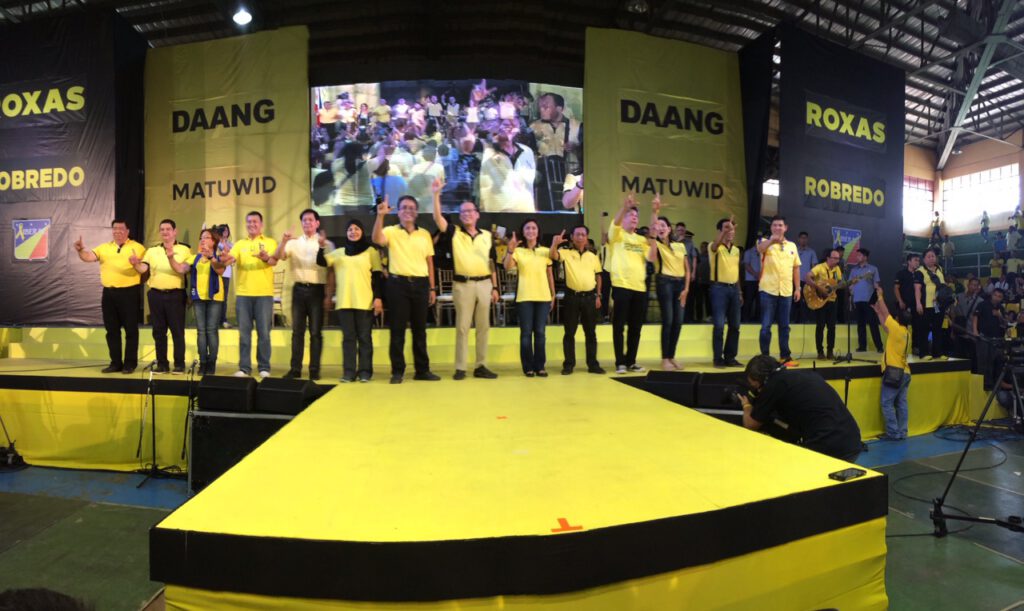

 The prolonged dry season caused by El Niño has exacerbated incidences of hunger, poverty, and deprivation in the countryside. Farmers and other food producers in Mindanao were seeking the urgent release of calamity funds but their desperate pleading was dismissed by bureaucratic gobbledygook and state brutality. The Philippines is vulnerable to the harsh impact of climate change but the situation is made worse by extreme poverty and inequality, bad governance, and environment plunder. Meanwhile, tropical storms wrought havoc in the Bicol region during the last quarter of the year.
The prolonged dry season caused by El Niño has exacerbated incidences of hunger, poverty, and deprivation in the countryside. Farmers and other food producers in Mindanao were seeking the urgent release of calamity funds but their desperate pleading was dismissed by bureaucratic gobbledygook and state brutality. The Philippines is vulnerable to the harsh impact of climate change but the situation is made worse by extreme poverty and inequality, bad governance, and environment plunder. Meanwhile, tropical storms wrought havoc in the Bicol region during the last quarter of the year. Despite the obvious unpreparedness of the education department, the senior high school (SHS) component of K-12 (it should have been named ‘TESDA in High School’) was implemented last June. The number of drop-outs was high even if this was denied by authorities, learning modules were inadequate or inaccurate, and many college teachers in private schools lost their jobs. But the corporate sector found K-12 as a lucrative potential, with tuition in SHS as high or double the rates in college. In addition, the K-12 curriculum directly promotes the labor export policy which would negatively affect the country’s human capital in the succeeding years.
Despite the obvious unpreparedness of the education department, the senior high school (SHS) component of K-12 (it should have been named ‘TESDA in High School’) was implemented last June. The number of drop-outs was high even if this was denied by authorities, learning modules were inadequate or inaccurate, and many college teachers in private schools lost their jobs. But the corporate sector found K-12 as a lucrative potential, with tuition in SHS as high or double the rates in college. In addition, the K-12 curriculum directly promotes the labor export policy which would negatively affect the country’s human capital in the succeeding years.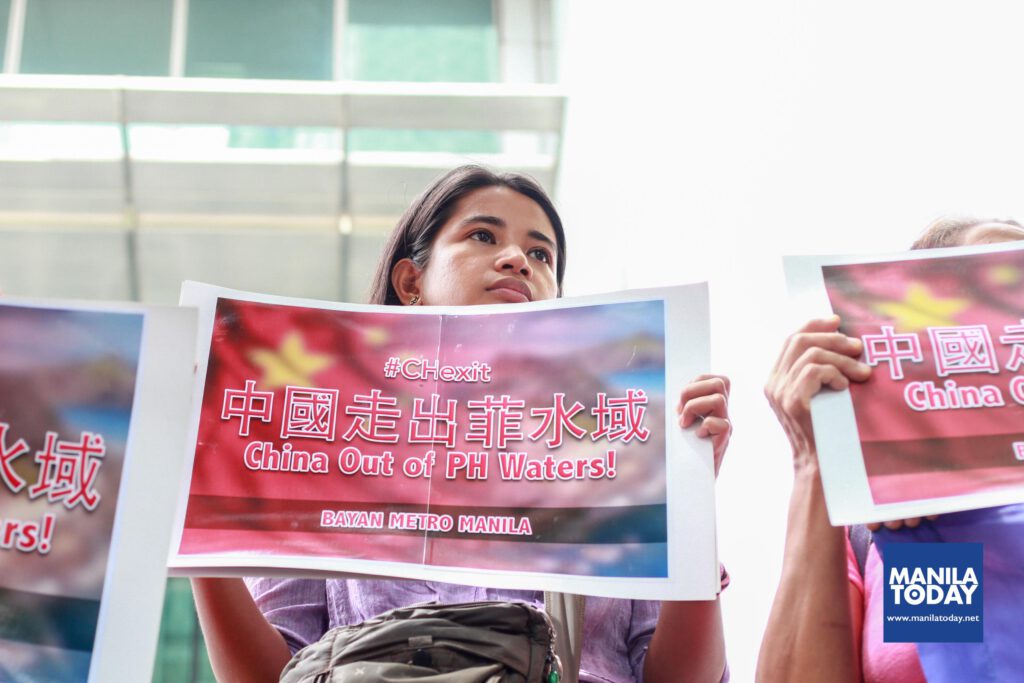 China’s bully behavior in the West Philippine Sea was officially recorded in the proceedings of The Permanent Court of Arbitration. The legal victory of the Philippines is part of the continuing struggle of the Filipino people to assert our sovereignty in our lands and territorial waters. Duterte eventually adopted a different strategy in dealing with China but it should not invalidate or undermine the historic significance of the PCA ruling.
China’s bully behavior in the West Philippine Sea was officially recorded in the proceedings of The Permanent Court of Arbitration. The legal victory of the Philippines is part of the continuing struggle of the Filipino people to assert our sovereignty in our lands and territorial waters. Duterte eventually adopted a different strategy in dealing with China but it should not invalidate or undermine the historic significance of the PCA ruling.

 There were moments in 2016 when some aspects of neoliberalism became part of mainstream political agenda. During the campaign period, presidential candidates were unanimous in criticizing the dehumanizing features of the contractualization (Endo) labor practice. When he assumed the presidency, Duterte reaffirmed his commitment to end Endo. Duterte also vowed to dismantle the reign of oligarchs. But Duterte’s economic advisers turned out to be fanatical followers of neoliberalism as they espoused the continuation of PPP, the adoption of a win-win formula (read: pro-business) on contractualization, the planned imposition of higher regressive taxes, and the refusal to hike pension and minimum wages. Duterte’s support base among the poor will weaken if his macroeconomic policies will continue to be biased in favor of the elite and big foreign business.
There were moments in 2016 when some aspects of neoliberalism became part of mainstream political agenda. During the campaign period, presidential candidates were unanimous in criticizing the dehumanizing features of the contractualization (Endo) labor practice. When he assumed the presidency, Duterte reaffirmed his commitment to end Endo. Duterte also vowed to dismantle the reign of oligarchs. But Duterte’s economic advisers turned out to be fanatical followers of neoliberalism as they espoused the continuation of PPP, the adoption of a win-win formula (read: pro-business) on contractualization, the planned imposition of higher regressive taxes, and the refusal to hike pension and minimum wages. Duterte’s support base among the poor will weaken if his macroeconomic policies will continue to be biased in favor of the elite and big foreign business.

 His victory confounded and disturbed many people especially immigrants, people of color, and the LGBT community. A conservative leader accused of promoting racist and misogynist views. Despite his image as a corporate tycoon, he was able to gather the support of ordinary voters who felt that the system is not working for them. What will happen once Trump becomes President Trump this month? How will a Trump presidency maintain American hegemony in world affairs? Will he openly support the alleged plot to oust Duterte? Will he deport migrants and foreigners from the US, 3.4M of them Filipinos, and expose the insolvency of the American dream?
His victory confounded and disturbed many people especially immigrants, people of color, and the LGBT community. A conservative leader accused of promoting racist and misogynist views. Despite his image as a corporate tycoon, he was able to gather the support of ordinary voters who felt that the system is not working for them. What will happen once Trump becomes President Trump this month? How will a Trump presidency maintain American hegemony in world affairs? Will he openly support the alleged plot to oust Duterte? Will he deport migrants and foreigners from the US, 3.4M of them Filipinos, and expose the insolvency of the American dream?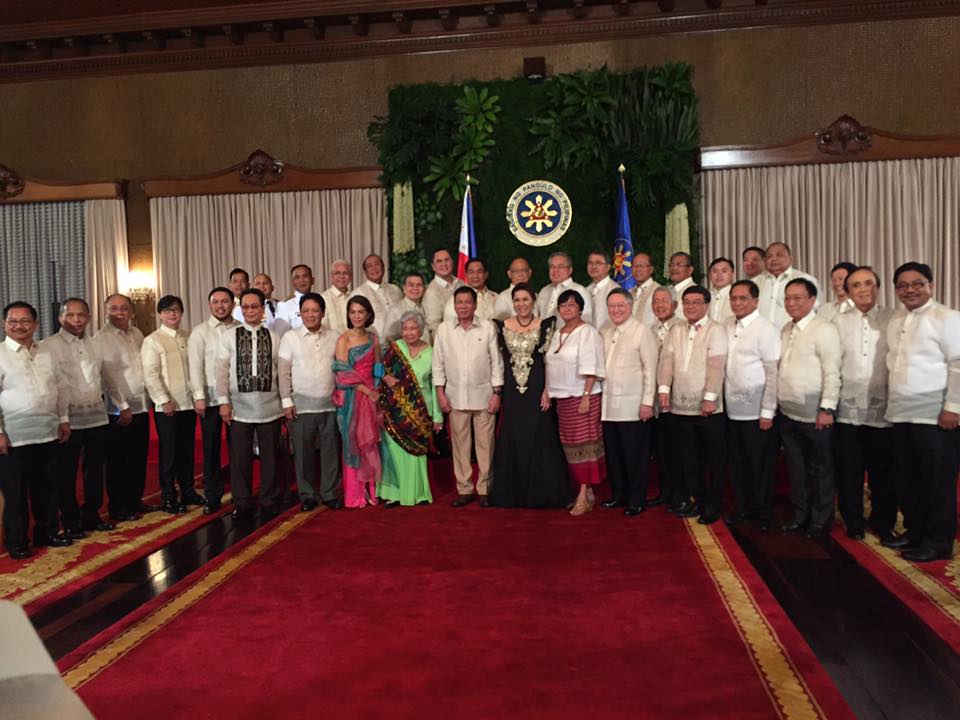
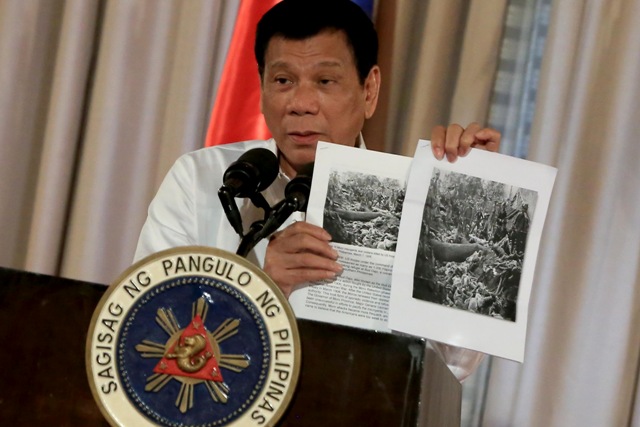


 Is it really free? Is it really for all? The details of this landmark policy will continue to be debated this year. Stakeholders are not yet finished in determining the applicability of this policy in schools across the country. But a big obstacle was breached in the fight for a free tertiary education. Lawmakers and education officials, reared in the neoliberal school of thought which disavows the giving away of subsidies, have finally articulated the relevance of providing free tuition to college students.
Is it really free? Is it really for all? The details of this landmark policy will continue to be debated this year. Stakeholders are not yet finished in determining the applicability of this policy in schools across the country. But a big obstacle was breached in the fight for a free tertiary education. Lawmakers and education officials, reared in the neoliberal school of thought which disavows the giving away of subsidies, have finally articulated the relevance of providing free tuition to college students.







 Along the same wave as the peace talks between the GRP and the NDF are the neglected state of more than 400 political prisoners in the country.
Along the same wave as the peace talks between the GRP and the NDF are the neglected state of more than 400 political prisoners in the country.
 Bright shades of red and purple assault the memories of a former comfort woman whose long-gone innocence filled the melancholic dilemma of a relevant past better off forgotten by the people who actually went through it. Tagyamon renders war trauma through a kaleidoscope of memorable images, making LOLA LOLENG not only a reminder to keep the relevant images at bay but also to pass it on to a millennial audience with a short, vicious attack of beauty and madness.
Bright shades of red and purple assault the memories of a former comfort woman whose long-gone innocence filled the melancholic dilemma of a relevant past better off forgotten by the people who actually went through it. Tagyamon renders war trauma through a kaleidoscope of memorable images, making LOLA LOLENG not only a reminder to keep the relevant images at bay but also to pass it on to a millennial audience with a short, vicious attack of beauty and madness. Cannes’ best actress announcement was the inciting incident to an assumed “poverty porn” flick that surpassed the expectations of a typical Brillante Mendoza, proving he has more tricks under his sleeve – like y’know, simplicity. Much has to be admired in this family drama, with a straightforward narrative, and narrative devices that echo both Alfred Hitchcock and Lino Brocka. Of course, the cherry on top is Jaclyn Jose, who proves her clamored “Jaclyn Jose acting” was all an exaggerated response to the power of her restraint.
Cannes’ best actress announcement was the inciting incident to an assumed “poverty porn” flick that surpassed the expectations of a typical Brillante Mendoza, proving he has more tricks under his sleeve – like y’know, simplicity. Much has to be admired in this family drama, with a straightforward narrative, and narrative devices that echo both Alfred Hitchcock and Lino Brocka. Of course, the cherry on top is Jaclyn Jose, who proves her clamored “Jaclyn Jose acting” was all an exaggerated response to the power of her restraint. Along with SUNDAY BEAUTY QUEEN, it’s the jewel crown on top of the diverse MMFF 2016. A stellar cast of Paolo Ballesteros, Christian Bables, Gladys Reyes, Joel Torre, Lou Veloso and Luis Alandy headline this bittersweet comedy drama penned with humane deftness by Rody Vera and rendered with the subtle provocations of Jun Lana. Along with SUNDAY BEAUTY QUEEN, DIE BEAUTIFUL is also this generation’s ultimate beauty contest film – unveiling the make-up, the witty punchlines and the sequined dresses to see the battered fighter beneath. The warrior is a kontesera, and vice versa.
Along with SUNDAY BEAUTY QUEEN, it’s the jewel crown on top of the diverse MMFF 2016. A stellar cast of Paolo Ballesteros, Christian Bables, Gladys Reyes, Joel Torre, Lou Veloso and Luis Alandy headline this bittersweet comedy drama penned with humane deftness by Rody Vera and rendered with the subtle provocations of Jun Lana. Along with SUNDAY BEAUTY QUEEN, DIE BEAUTIFUL is also this generation’s ultimate beauty contest film – unveiling the make-up, the witty punchlines and the sequined dresses to see the battered fighter beneath. The warrior is a kontesera, and vice versa. While Calma’s short film was released in 2015, ALINGAWNGAW revived interest in the Martial Law life during 2016’s most contradictory burial. With silent, haunting images of a radio, an empty house, a sinister game of patintero, of torture, dispersal and the silent worldweary visage of Alessandra de Rossi clearly on top form, ALINGANGAW is an elegantly brief but poignant look at “Bagong Lipunan”.
While Calma’s short film was released in 2015, ALINGAWNGAW revived interest in the Martial Law life during 2016’s most contradictory burial. With silent, haunting images of a radio, an empty house, a sinister game of patintero, of torture, dispersal and the silent worldweary visage of Alessandra de Rossi clearly on top form, ALINGANGAW is an elegantly brief but poignant look at “Bagong Lipunan”. Derrick Cabrido’s drama works as both a character study between the old and new generation and as a mythical exploration of tradition, youth, curiosity, regrets and art. Barbie Forteza is unafraid to stand toe-to-toe with the Nora Aunor and their dynamics sizzles as the film unfolds in such a languid, ethereal and dream-like fashion. As Tuos comes into conclusion, it poses more questions than answers, which directs its viewers to reflect on what they have just witnessed. (Review by Kayo Jolongbayan)
Derrick Cabrido’s drama works as both a character study between the old and new generation and as a mythical exploration of tradition, youth, curiosity, regrets and art. Barbie Forteza is unafraid to stand toe-to-toe with the Nora Aunor and their dynamics sizzles as the film unfolds in such a languid, ethereal and dream-like fashion. As Tuos comes into conclusion, it poses more questions than answers, which directs its viewers to reflect on what they have just witnessed. (Review by Kayo Jolongbayan) In Eduardo Roy Jr’s most daring film yet, he didn’t miss any opportunity to make his audience feel dirty, tensed and terrified in this suffocating yet raw melodrama. With Hasmine Killip and Ronwaldo Martin delivering some of the year’s best performances as the film’s central figures, this subtle yet hauntingly real drama is both provocative and poignant. With echoes of Bonnie and Clyde and The Graduate, Roy turns the murky reality into a vibrant yet rustic picture. (Review by Kayo Jolongbayan)
In Eduardo Roy Jr’s most daring film yet, he didn’t miss any opportunity to make his audience feel dirty, tensed and terrified in this suffocating yet raw melodrama. With Hasmine Killip and Ronwaldo Martin delivering some of the year’s best performances as the film’s central figures, this subtle yet hauntingly real drama is both provocative and poignant. With echoes of Bonnie and Clyde and The Graduate, Roy turns the murky reality into a vibrant yet rustic picture. (Review by Kayo Jolongbayan) It must be said that SUNDAY BEAUTY QUEEN is the real surprise movie of the year. Not only was it a moving portrait of Overseas Filipino Workers (OFWs), it was surprisingly the unconventional choice for the MMFF Best Picture. And it rightfully is the best of that bunch. By focusing on the leisurely Sunday Beauty Contests in Hong Kong, Villarama juxtaposes the colorful background of the contests to the drab realities of domestic helpers that are not too distant to Rory Quintos’ ANAK or Lamasan’s MILAN. But come to think of it, its illegitimate sister DIE BEAUTIFUL also manages to do the same, with the two films revealing the two faces of escapist entertainment and the miserable realities women and the LGBT experience both at home and outside of it.
It must be said that SUNDAY BEAUTY QUEEN is the real surprise movie of the year. Not only was it a moving portrait of Overseas Filipino Workers (OFWs), it was surprisingly the unconventional choice for the MMFF Best Picture. And it rightfully is the best of that bunch. By focusing on the leisurely Sunday Beauty Contests in Hong Kong, Villarama juxtaposes the colorful background of the contests to the drab realities of domestic helpers that are not too distant to Rory Quintos’ ANAK or Lamasan’s MILAN. But come to think of it, its illegitimate sister DIE BEAUTIFUL also manages to do the same, with the two films revealing the two faces of escapist entertainment and the miserable realities women and the LGBT experience both at home and outside of it. Another MMFF entry, the film showcases an incisive observation and powerful parody of one of the movie industry’s most common fare, the romcom or romantic comedy movies. It picked apart the romcom so well that audiences would see what they usually see in these movies, but seeing them with different eyes. And of course, a Eugene Domingo-starrer Chris Martinez-penned film is expectedly a showcase of the comedic and acting prowess of possibly the best comedienne of today, again, Eugene Domingo, and possibly the best writer of comedy, again, Chris Martinez. With true comedies a rarity and slapsticks a-plenty, it felt so good to be laughing again.
Another MMFF entry, the film showcases an incisive observation and powerful parody of one of the movie industry’s most common fare, the romcom or romantic comedy movies. It picked apart the romcom so well that audiences would see what they usually see in these movies, but seeing them with different eyes. And of course, a Eugene Domingo-starrer Chris Martinez-penned film is expectedly a showcase of the comedic and acting prowess of possibly the best comedienne of today, again, Eugene Domingo, and possibly the best writer of comedy, again, Chris Martinez. With true comedies a rarity and slapsticks a-plenty, it felt so good to be laughing again. While film audiences contended with the controversial theme and apparent message of the film, the handiwork of the master that is Erik Matti is undeniable and indelible as in his other recent acclaimed works On the Job (2013) and Honor Thy Father (2015). Deserving of its technical awards and in toto the directorial job on the film and its award, the MMFF entry was also a box office hit that was screened even long after the festival along with top-grosser Die Beautiful.
While film audiences contended with the controversial theme and apparent message of the film, the handiwork of the master that is Erik Matti is undeniable and indelible as in his other recent acclaimed works On the Job (2013) and Honor Thy Father (2015). Deserving of its technical awards and in toto the directorial job on the film and its award, the MMFF entry was also a box office hit that was screened even long after the festival along with top-grosser Die Beautiful. The only mainstream film in the list is what the LGBT would say a “winnur.” Sam Milby and Zanjoe Marudo play lovers in the film while Angel Locsin plays the ex-girlfriend of Sam and the third wheel, not truly a third party. The stereo-type-breaking, gender-bender film (scorned woman giving full respect and understanding for her ex and his new boy love) portrayed a tender, enduring homosexual relationship not unlike a heterosexual relationship and all its affections and troubles. What’s more, the film grossed more than P 100 million pesos in the box office. If only, and hopefully, the rights of the LGBT in our society would earn as much (or more) support.
The only mainstream film in the list is what the LGBT would say a “winnur.” Sam Milby and Zanjoe Marudo play lovers in the film while Angel Locsin plays the ex-girlfriend of Sam and the third wheel, not truly a third party. The stereo-type-breaking, gender-bender film (scorned woman giving full respect and understanding for her ex and his new boy love) portrayed a tender, enduring homosexual relationship not unlike a heterosexual relationship and all its affections and troubles. What’s more, the film grossed more than P 100 million pesos in the box office. If only, and hopefully, the rights of the LGBT in our society would earn as much (or more) support.










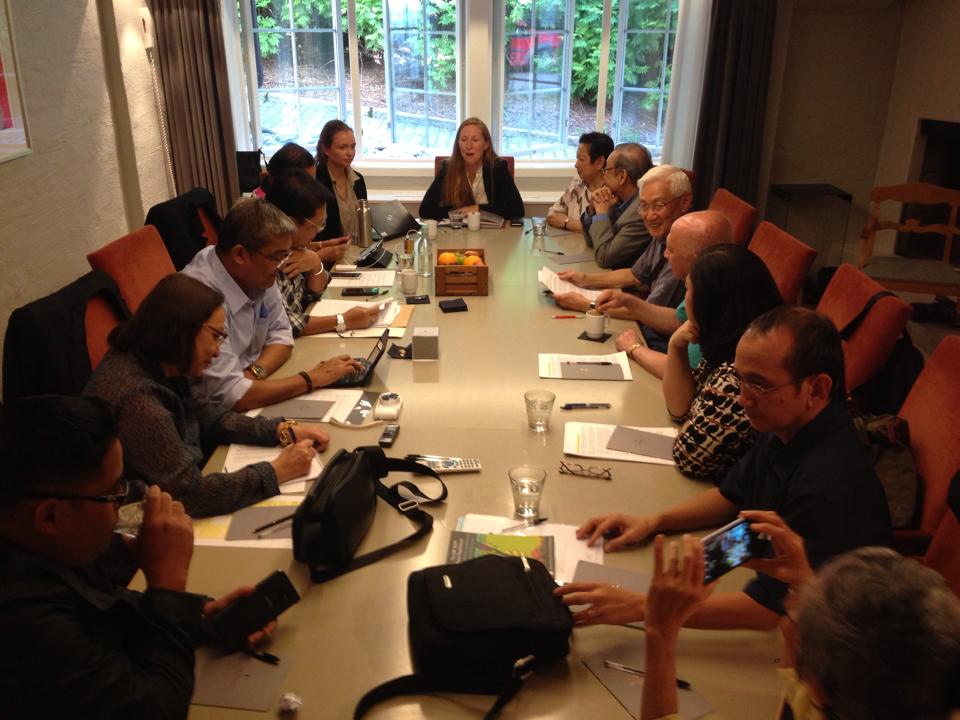






 After the death of the ailing nine-year detained, 66-year old peasant leader Bernabe Ocasla, Bello said that “The more than 400 political prisoners will be released in due time.”
After the death of the ailing nine-year detained, 66-year old peasant leader Bernabe Ocasla, Bello said that “The more than 400 political prisoners will be released in due time.”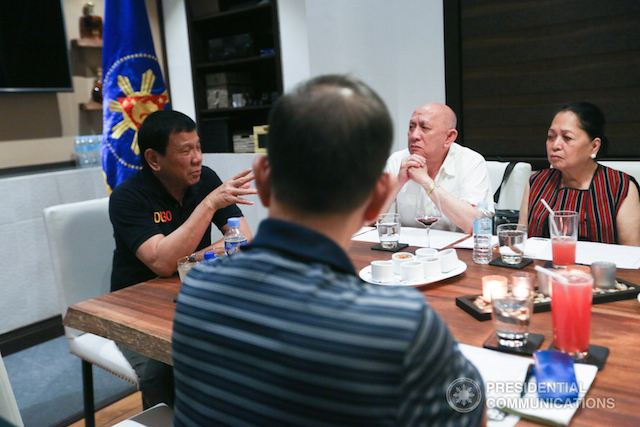



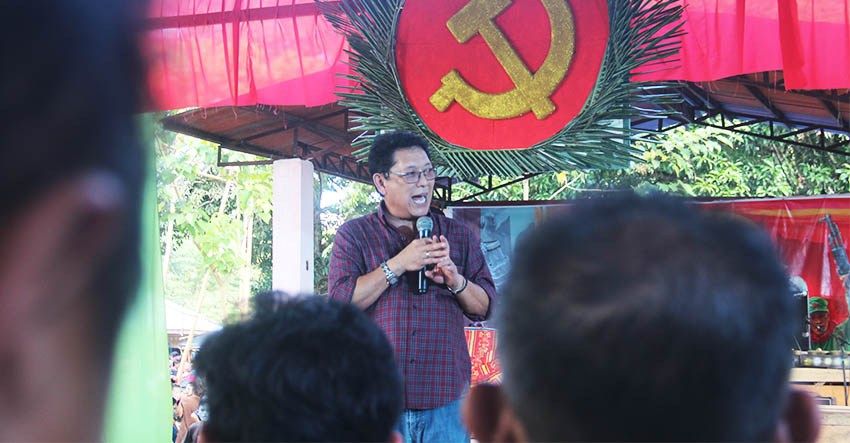









 Nagmistulang mabisang ulatan ng bayan ang social media sa kanilang mga reklamo hinggil sa bulok na mga pasilidad at sistema ng mass transport, partikular ang MRT at LRT. Nitong 2016, nagpatuloy ang paggamit ng mga naperwisyong mga mananakay ng MRT at LRT ang hashtag na #MRTBulok upang iparating sa kinauukulan, maging sa mga kapwa nila netizens ang mga usapin ng mahahabang pila, nasiraang bagon ng tren, hindi sumasarang mga pintuan ng tren, tumutulong tubig at maraming iba pa.
Nagmistulang mabisang ulatan ng bayan ang social media sa kanilang mga reklamo hinggil sa bulok na mga pasilidad at sistema ng mass transport, partikular ang MRT at LRT. Nitong 2016, nagpatuloy ang paggamit ng mga naperwisyong mga mananakay ng MRT at LRT ang hashtag na #MRTBulok upang iparating sa kinauukulan, maging sa mga kapwa nila netizens ang mga usapin ng mahahabang pila, nasiraang bagon ng tren, hindi sumasarang mga pintuan ng tren, tumutulong tubig at maraming iba pa. Hindi rin nagpahuli ang manggagawang Pilipino sa pagtutulak ng kanilang adbokasiya laban sa kontraktwalisasyon o “endo” sa larangan ng social media. Gamit ang hashtag na #EndContractualization, ipinahayag nila ang kanilang mga sentimyento at pagsingil sa nabibinbing pangako ni Pangulong Duterte na wawakasan nito ang “endo” sa unang anim na buwan ng kanyang panunungkulan.
Hindi rin nagpahuli ang manggagawang Pilipino sa pagtutulak ng kanilang adbokasiya laban sa kontraktwalisasyon o “endo” sa larangan ng social media. Gamit ang hashtag na #EndContractualization, ipinahayag nila ang kanilang mga sentimyento at pagsingil sa nabibinbing pangako ni Pangulong Duterte na wawakasan nito ang “endo” sa unang anim na buwan ng kanyang panunungkulan. Ang #TheChangeWeNeed ang hashtag na ipinantapat sa islogang “Change is Coming” na bitbit ng administrasyong Duterte sa kanyang pag-upo sa kapangyarihan. Nagsilbing daluyan ang hashtag na ito upang maiparating ng simpleng mamamayan ang kanilang mga nais na pagbabagong maramdaman sa loob ng anim na taong panunungkulan ng bagong gobyerno na nangako ng pagbabago.
Ang #TheChangeWeNeed ang hashtag na ipinantapat sa islogang “Change is Coming” na bitbit ng administrasyong Duterte sa kanyang pag-upo sa kapangyarihan. Nagsilbing daluyan ang hashtag na ito upang maiparating ng simpleng mamamayan ang kanilang mga nais na pagbabagong maramdaman sa loob ng anim na taong panunungkulan ng bagong gobyerno na nangako ng pagbabago. Upang gunitain ang Pandaigdigang Araw ng Karapatang Pantao para sa taong 2016 at ipanawagan ng grupong Karapatan ang pagpapalaya sa mahigit 400 na mga bilanggong pulitikal sa buong bansa, inilunsad at itinirik ang #FreeAllPoliticalPrisoners Solidarity Fasting Center sa paanan mismo ng Mendiola simula Disyembre 3-10. Layon nitong itulak ang administrasyong Duterte na tuparin ang ipinangako nitong pagpapalaya ng lahat ng mga bilanggong pulitikal.
Upang gunitain ang Pandaigdigang Araw ng Karapatang Pantao para sa taong 2016 at ipanawagan ng grupong Karapatan ang pagpapalaya sa mahigit 400 na mga bilanggong pulitikal sa buong bansa, inilunsad at itinirik ang #FreeAllPoliticalPrisoners Solidarity Fasting Center sa paanan mismo ng Mendiola simula Disyembre 3-10. Layon nitong itulak ang administrasyong Duterte na tuparin ang ipinangako nitong pagpapalaya ng lahat ng mga bilanggong pulitikal. Bigas ang hiningi ng gutom na mga magsasaka ng Kidapawan, ngunit bala ang ginanti sa kanila ng pamahalaan. Naglabasan ang maraming hashtag tugon sa usaping ito hanggang napag-isa ito sa #BigasHindiBala, matapos ang madugong dispersal sa kahabaan ng Cotabato-Davao Highway tanghali ng Abril 1, 2016. May 15,000 sako ng bigas ang matagal nang nakabinbing ibigay sa mga magsasakang ilang buwan nang biktima ng El Nino at nakararanas ng gutom. Kung kaya’t sila ay nagbarikada at nagprotesta upang igiit ang agarang pag-release ng relief goods na bigas.
Bigas ang hiningi ng gutom na mga magsasaka ng Kidapawan, ngunit bala ang ginanti sa kanila ng pamahalaan. Naglabasan ang maraming hashtag tugon sa usaping ito hanggang napag-isa ito sa #BigasHindiBala, matapos ang madugong dispersal sa kahabaan ng Cotabato-Davao Highway tanghali ng Abril 1, 2016. May 15,000 sako ng bigas ang matagal nang nakabinbing ibigay sa mga magsasakang ilang buwan nang biktima ng El Nino at nakararanas ng gutom. Kung kaya’t sila ay nagbarikada at nagprotesta upang igiit ang agarang pag-release ng relief goods na bigas. Oktubre 19, 2016 nang maganap marahas na dispersal sa pagkilos sa harapan ng US Embassy sa Maynila nang sagasaan ni PO3 Franklin Kho sa utos ni MPD Col. Marcelino Pedroso ang mga nagpoprotestang mga pambansang minorya na kasapi ng bagong tatag na alyansang Sandugo. Nasa ika-anim na araw noon ng #LakbayanPambansangMinorya nang maganap ang nasabing karahasan na lumikha ng ingay hindi lamang sa Pilipinas kundi maging sa labas ng bansa.
Oktubre 19, 2016 nang maganap marahas na dispersal sa pagkilos sa harapan ng US Embassy sa Maynila nang sagasaan ni PO3 Franklin Kho sa utos ni MPD Col. Marcelino Pedroso ang mga nagpoprotestang mga pambansang minorya na kasapi ng bagong tatag na alyansang Sandugo. Nasa ika-anim na araw noon ng #LakbayanPambansangMinorya nang maganap ang nasabing karahasan na lumikha ng ingay hindi lamang sa Pilipinas kundi maging sa labas ng bansa. Laman araw-araw ng mga balita ang kaliwa’t kanang patayan sa mga maralitang mga komunidad dahil sa “gera kontra droga” na pinasimulan ng gobyernong Duterte. Sa kasalukuyan, umaabot na sa halos 6,000 ang mga namamatay sa buong bansa.
Laman araw-araw ng mga balita ang kaliwa’t kanang patayan sa mga maralitang mga komunidad dahil sa “gera kontra droga” na pinasimulan ng gobyernong Duterte. Sa kasalukuyan, umaabot na sa halos 6,000 ang mga namamatay sa buong bansa. Naging maingay ang huling bahagi ng 2016 dahil sa pagbabasura ng Korte Suprema sa mga petisyon laban sa paglilibing kay dating Pangulong Ferdinand Marcos sa Libingan ng mga Bayani (LNMB).
Naging maingay ang huling bahagi ng 2016 dahil sa pagbabasura ng Korte Suprema sa mga petisyon laban sa paglilibing kay dating Pangulong Ferdinand Marcos sa Libingan ng mga Bayani (LNMB). Nagsimula ang #CHexit sa isang protestang pinangunahan ng Bayan Metro Manila sa harapan ng konsulado ng Tsina sa Lungsod ng Makati noong Hulyo 11, 2016. Isinunod ang nasabing hashtag sa #Brexit o ang pagkalas ng Great Britain sa European Union na nangyari at sumikat sa buong mundo bago lang muling uminit ang usapin sa panghihimasok ng Tsina sa teritoryo ng Pilipinas.
Nagsimula ang #CHexit sa isang protestang pinangunahan ng Bayan Metro Manila sa harapan ng konsulado ng Tsina sa Lungsod ng Makati noong Hulyo 11, 2016. Isinunod ang nasabing hashtag sa #Brexit o ang pagkalas ng Great Britain sa European Union na nangyari at sumikat sa buong mundo bago lang muling uminit ang usapin sa panghihimasok ng Tsina sa teritoryo ng Pilipinas. Pinakatampok na hashtag ngayong taon ang #JustPeace at ilang mga katulad na mga hashtags patungkol sa kampanya hinggil sa makatarungan at pangmatagalang kapayapaan at usapang pangkapayapaan sa pagitan ng GRP at NDFP pagkapasok na pagkapasok pa lamang ng administrasyong Duterte. Kabilang sa mga kampanyang ito ay ang #JuanForPeace, #ActforPeace, #JustPeacePH at iba pa.
Pinakatampok na hashtag ngayong taon ang #JustPeace at ilang mga katulad na mga hashtags patungkol sa kampanya hinggil sa makatarungan at pangmatagalang kapayapaan at usapang pangkapayapaan sa pagitan ng GRP at NDFP pagkapasok na pagkapasok pa lamang ng administrasyong Duterte. Kabilang sa mga kampanyang ito ay ang #JuanForPeace, #ActforPeace, #JustPeacePH at iba pa.
